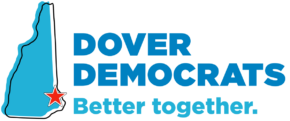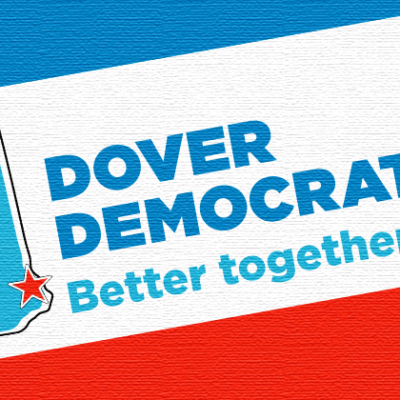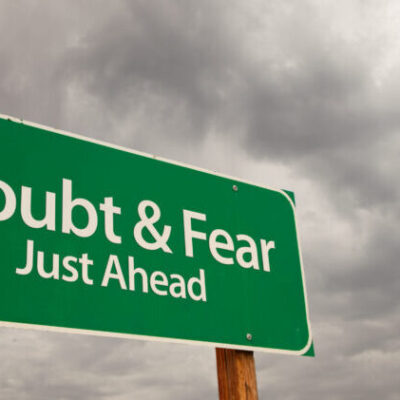Which Political Party Is Best for the Economy?
by Tony Retrosi
It is probably not who you think it is.
Every election has something to do with the economy. When I say economy, I mean the Main Street Economy. Not Wall Street.
Source: Demcast
The idea that the Republican Party cares about the debt and deficit is one of the biggest myths in America. The numbers speak for themselves: The last four Republican presidents have increased the deficit. The last three Democratic presidents have reduced the deficit. Historically, the United States economy has performed better on average under the administration of Democratic presidents than Republican presidents since World War II. The reasons for this are debated, and the observation applies to economic variables including job creation, GDP growth, stock market returns, personal income growth and corporate profits. The unemployment rate has fallen on average under Democratic presidents, while it has risen on average under Republican presidents. Budget deficits relative to the size of the economy were lower on average for Democratic presidents. Ten of the eleven U.S. recessions between 1953 and 2020 began under Republican presidents.
Each election the Republican party runs on economic issues. They try to be the party for the average family but the reality is far from that.
Donald Trump, who ran for president as a fiscal genius added $6.7 trillion to the debt between fiscal year 2017 and fiscal year 2020, a 33.1% increase. In his FY 2021 budget, Trump’s budget included a $966 billion deficit. However, the national debt actually grew by $1.5 trillion between October 1, 2020, and October 1, 2021. As high as that was – we were facing a global pandemic his last year in the White House but his previous 3 years were not much better due to the Republican party’s irresponsible tax breaks for the top 1%. FY 2018: $1.3 trillion, FY 2019: $1.2 trillion, FY 2020: $4.2 trillion.
What Is National Debt?
The national debt, also known as federal or public debt, is the outstanding financial obligation of a country. The national debt of the United States is what the federal government owes creditors, including debt held by the public and federal government trust funds, and represents the sum of past annual budget deficits.
Tax Cuts
Historically, tax cuts passed by Congress play a large part in the growth of the national debt. The Bush tax cuts of 2001 and 2003 had a combined estimated 10-year cost of about $1.7 trillion. The American Taxpayer Relief Act of 2012 made the bulk of the tax cuts passed in 2001 and 2003 permanent.
In 2018, Democrats on the Senate Budget Committee estimated the annual cost of those tax cuts as $488 billion. The Tax Cuts and Job Act (TCJA) of 2017 is expected to increase budget deficits by a cumulative $1.9 trillion through 2028, according to CBO estimates.
Job Creation
Job creation refers to the number of net jobs added, which is reported monthly by the Bureau of Labor Statistics. For the 13 presidents beginning with Truman, total job creation was about 70.5 million for the 7 Democratic presidents and 29.1 million for the 6 Republican presidents. The Democratic presidents were in office for a total of 429 months, with 164,000 jobs per month added on average, while the Republicans were in office for 475 months, with a 61,000 jobs added per month on average. This monthly average rate was 2.4 times faster under Democratic presidents.
Former President Bill Clinton said in 2012 that “Since 1961…the Republicans have held the White House for 28 years, the Democrats for 24…In those 52 years, our private economy has produced 66 million private-sector jobs. So what’s the jobs score? Republicans 24 million, Democrats 42
million.”
Job Creation by President
Annual percentage of change in NON FARM Employment. Change of unemployment rate during presidency
· Ford 1.8% +2.0
· Carter 3.06% 0
· Reagan 2.06% -2.1
· H.W. Bush 0.61% +1.9
· Clinton 2.4% -3.1
· W. Bush 0.13% +3.6
· Obama 1.04% -3.1
· Trump -.51% (Pandemic year) +1.6
· Biden 4.3% -2.8
Other than during the Reagan administration in the 1980s each Republican President had poor job growth and a RISE IN UNEMPLOYMENT.
Income Growth and Inequality
Analysis conducted by Vanderbilt University political science professor Larry Bartels in 2004 and 2015 found income growth is faster and more equal under Democratic presidents. He found real incomes increased in the 20th and 40th percentiles of incomes under Democrats, while they fell under Republicans. Real incomes grew across all higher percentiles at a greater rate under Democrats, even when including the Great Recession and its recovery in Barack Obama’s first term. Bartels calculated in 2008 that the real value of the minimum wage in the United States over the preceding sixty years had increased 16 cents per year under Democratic presidents but declined by 6 cents per year under Republican presidents
Federal Budget Deficits
Blinder and Watson reported that budget deficits tended to be smaller under Democrats, at 2.1% potential GDP versus 2.8% potential GDP for Republicans, a difference of about 0.7 of a percentage point. Since 1981, federal budget deficits have increased under Republican presidents Reagan, both Bushes and Trump, while deficits have declined under Democratic presidents Clinton and Obama. The economy ran surpluses during Clinton’s last four fiscal years, the first surpluses since 1969. The deficit was projected to decline sharply in Joe Biden’s first fiscal year. Does this last sentence need an update?
Now let’s take a look at the priorities of presidents. NOT what they said they would do, but what they actually did.
The Republican Record:
In the 1980s Ronald Reagan signed massive tax cuts into law that benefited the well off and well connected. He spent our way out of the Cold War and exploded the deficit.
In 2001, 2003 George W. Bush signed into law massive tax cuts benefiting the wealthiest Americans. He got us into 2 failed wars that cost BILLIONS each year, the necessity of which can be debated. It is that kind of spending which hurts the economy. The combined cost of his tax cuts alone is estimated at $1.7 TRILLION. But as the Republicans gave away billions on wars and in corporate welfare they asked the poorest Americans to toughen up.
In 2017 “businessman” Donald Trump gave another round of massive tax cuts to the top 1%, further driving up the debt. Giving 83% of tax cuts to the top 1% while the rest of us are asked to work harder. The tax cut and jobs act is expected to increase the debt by a cumulative total of $1.9 TRILLION by 2028. Instead of any social safety nets the bottom 15% of Americans are told to pull themselves up by their bootstraps.
In April the GOP led House of Representatives barely passed a Debt Ceiling Proposal knowing full well that there was no chance of it passing the senate. This action set up the negotiations between President Biden and Speaker McCarthy as the country edged closer to hitting the debt ceiling in the beginning of June. ANY default on the U.S. national debt during the current interest rate environment could escalate into a wave of corporate and sovereign defaults.
McCarthy and the GOP House were trying to hold the economy of the WORLD hostage. Even though former President Donald Trump extolled the debt ceiling as “a sacred element of our country that should never be wielded as a bargaining chip in budget talks.”
On Wednesday, May 31, the House overwhelmingly passed legislation to suspend the debt ceiling and set federal spending limits. The bill would defer the federal debt limit for two years — allowing the government to borrow sums as necessary to pay its obligations — while imposing two years of spending caps and a string of policy changes that Republicans demanded in exchange for allowing the country to avoid a disastrous default.
Like all compromises (and the way government should work) far-right and hard-left lawmakers did not agree over the deal. In the end it fell to a bipartisan coalition powered by Democrats to push the bill over the finish line, throwing their support behind the compromise in an effort to break the fiscal stalemate.
Once again, it was the Democrats being the fiscally responsible party not willing to drive the world’s economy into a ditch.
It is not worth going into what the House Proposal was because it is just a recycled version of every other GOP budget proposal. Keep giving the money to the Wall Street / corporate community while Main Street suffers.
HOW DARE THE GOP LECTURE THE REST OF US ON FISCAL RESPONSIBILITY? The record is clear. If you care about the economy you know who to vote for.








